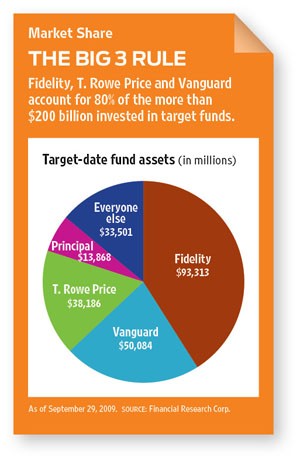Protect Your Portfolio Gains From a Market DipKiplinger
Post on: 5 Июль, 2015 No Comment

A systematic plan will keep investing risk in check and your retirement on track.
Thinkstock
As stocks surge ahead, investors should consider tapping the brakes on retirement portfolios. A little recalibration can help safeguard your gains if the market slumps.
See Also: 4 Risks That Could Topple the Stock Market
The Dow Jones industrial average touched a new record high on March 5 and climbed higher from there. While the stock market rally has likely buoyed your retirement balance, it may have also shaken up your investment mix, your overall portfolio risk and your emotions. To keep risk in check and retirement plans on target, investors need a systematic plan for reassessing their asset allocation, rebalancing portfolios and ensuring they have a sufficient cushion to protect them from market downturns.
Without such a disciplined plan, investors’ emotions may get the better of them. James Ciprich, a certified financial planner at RegentAtlantic Capital in Morristown, N.J. recently met with a couple in their eighties whose portfolio is about 50% bonds and 50% stocks and alternative investments. Seeing the stock market’s surge, they were considering boosting their stock allocation to about 70%. Ciprich steered them away from the move. Their investment mix was based on the fact that they have enough money to meet living expenses and don’t need to take additional risk, he says. Changing your allocation to chase returns is always going to hurt you, he says.
To guard against such rearview-mirror investing decisions, investors thinking of adjusting their target asset allocation should ask themselves if their investment goals and risk tolerance have really changed. If not, your target investment mix shouldn’t change, either.
Advertisement
That doesn’t mean no adjustments are necessary. A portfolio that is never rebalanced back to its target allocation will naturally drift toward higher-return, higher-risk investments, as stocks outperform bonds over the long haul. That sets investors up for a nasty fall during a market downturn.
Rebalancing—the process of selling your winners and buying losers—is never quite as simple as it sounds. At a gut level, nobody wants to sell stocks when they’re soaring or buy them when they’re plunging. And now, investors confront the prospect of rebalancing from stocks into bonds, whose low yields generally look unattractive.
Resist the urge to plow money taken from stocks into higher-yielding junk debt or longer-term bonds. Junk bonds have already had a big run, and investors should consider rebalancing out of these risky holdings too, advisers say. As for longer-term bonds, they’ll be hit hard when interest rates start to rise. Focus instead on shorter-term, high-quality bonds.
Cushion Your Nest Egg With Cash
Paul Carroll, chief executive at Efficient Wealth Management in The Woodlands, Tex. suggests another approach: Rebalance from stocks into cash. Retirees should have about two to five years’ worth of living expenses in cash and near-cash holdings, which may include certificates of deposit or ultra-short-term bond funds. Then, if riskier holdings get hit, we don’t care, Carroll says. The cash bucket gives us a very high confidence level that we can recover.
Investors should develop rules for periodic rebalancing to avoid tweaking portfolios too often and racking up trading costs and tax bills. Ciprich allows asset allocation to drift 20% from target levels before rebalancing. A 10% emerging-markets allocation, for example, would have to climb to 12% before he’ll trim back or sink to 8% before he’ll buy more. This threshold rebalancing should be performed at regular intervals, perhaps semiannually.
Despite the market’s advance, many investors still flinching from the financial crisis remain underweighted in stocks, says Michael Falcon, head of retirement at J.P. Morgan Asset Management. These investors should consider dollar-cost averaging into the market—regularly investing a set dollar amount in stocks over an extended period. Set yourself a disciplined program. Buy into your correct weighting over a number of months or quarters, Falcon says.
Haven’t yet filed for Social Security? Create a personalized strategy to maximize your lifetime income from Social Security. Order Kiplinger’s Social Security Solutions today.














